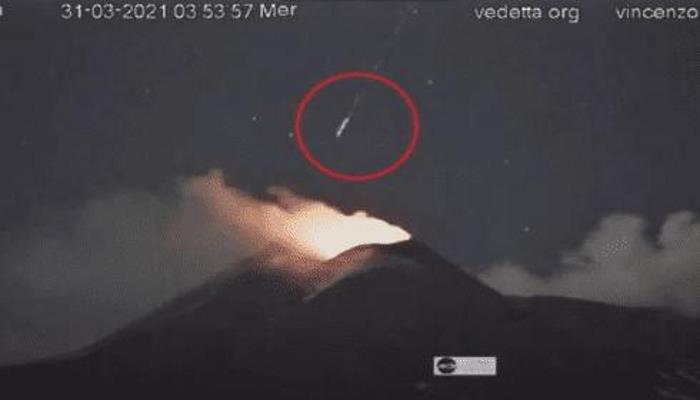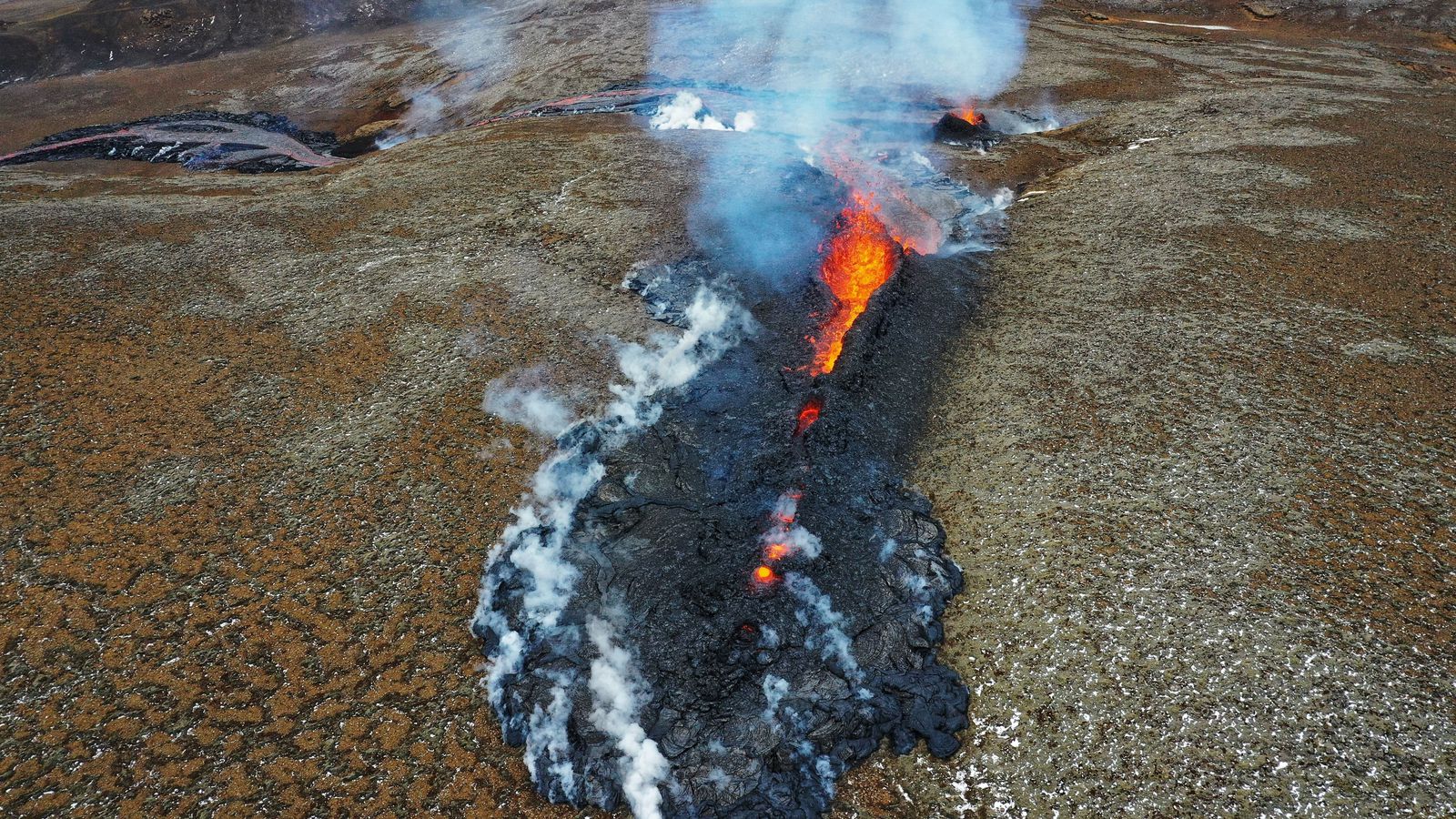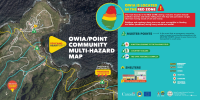You are using an out of date browser. It may not display this or other websites correctly.
You should upgrade or use an alternative browser.
You should upgrade or use an alternative browser.
Volcanoes Erupting All Over
- Thread starter Laura
- Start date
Popocatepetl volcano has erupted, spewing ash 6.7 kilometers into the sky.
By: VN - 4 Apr 2021
Published on Apr 4, 2021 (0:28)
Published on Apr 4, 2021 (2:17)
Some interesting stuff:

 www.soulask.com
Published 11 mins ago
www.soulask.com
Published 11 mins ago
Popocatépetl Volcano Volcanic Ash Advisory: OCNL EM to 22000 ft (6700 m)
Popocatepetl volcano (Mexico) news and eruption updates
www.volcanodiscovery.com
Published on Apr 4, 2021 (0:28)
Published on Apr 4, 2021 (2:17)
Some interesting stuff:

Luminous objects detected over Popocatepetl and Etna volcanos
One of the most beloved volcanoes by “aliens” has long been considered the Mexican Popocatepetl, which continues to delight Ufology enthusiasts, with
 www.soulask.com
www.soulask.com
A new fissure has opened up at the Fagradalsfjalli eruption in Iceland.

 www.visir.is
www.visir.is

Nýjar sprungur opnuðust á Reykjanesskaga - Vísir
Ný hraunsprunga hefur nú opnast um hálfan kílómetra norðaustur af gosstöðvunum í Geldingadölum.
XPan
The Living Force
New Vent • Fagradalsfjall
Life Webcam showing the new vent
Life Webcam showing the 'old' vent
Apparently the new vent opened around a half kilometer from the first, and is a half kilometer long. As the old vent went sluggish yesterday, it was because the magma was searching for a new way to get out, resulting into the creation of the new vent - which already is building a hornito, and the lava flow activity has accelerated during the afternoon





Apparently the new vent opened around a half kilometer from the first, and is a half kilometer long. As the old vent went sluggish yesterday, it was because the magma was searching for a new way to get out, resulting into the creation of the new vent - which already is building a hornito, and the lava flow activity has accelerated during the afternoon
Chad
The Living Force
Seismologists have detected signs of activity near another volcano in Iceland, called Katla, the first for 8 years:
Some beautiful images there =)
A third new fissure opened around midnight last night between the two others at the Fagradalsfjall Volcano in Iceland. I believe located very close to where the search and rescue tents were previously located. The lava flowing from this new fissure headed towards the original eruption valley, and 'consumed' one of the webcams pointed towards those cones - someone made a gif catching the moment that cam went offline.

A third new fissure opened around midnight last night between the two others at the Fagradalsfjall Volcano in Iceland. I believe located very close to where the search and rescue tents were previously located. The lava flowing from this new fissure headed towards the original eruption valley, and 'consumed' one of the webcams pointed towards those cones - someone made a gif catching the moment that cam went offline.
Scientists discover new active volcano in Chilean Patagonia
Geologists from the University of Chile published about Mate Grande in Scientific Reports of the journal Nature.
A study on the Liquiñe-Ofqui fault, published this week in Nature Scientific Reports, and which explored this area of Chilean Patagonia managed to identify a new active volcano: Mate Grande.
The main author of the publication is Gregory De Pascale, academic of the Department of Geology of the Faculty of Physical and Mathematical Sciences of the University of Chile, who explained that several visits were necessary to reach this conclusion: "We conducted a field study, using vessels, including the Chilean Navy's 'Cabo del Horno' and helicopters, for the remote sensing study of active faults in Patagonia of the Liquiñe-Ofqui Fault, in an area that is covered with snow 10 months of the year, difficult to access due to the altitude and geography that boasts dense vegetation and Valdivian forest."
"During a helicopter flight in summer, you could clearly see the difference in colors between the darker basaltic rock produced in an eruptive event, compared to the lighter intrusive rocks such as granite, which are formed inside the earth," added the doctor in Neotectonic Geology.
The Liquiñe-Ofqui Fault is the name of a set of geological faults that run for about 1,200 kilometers, in a north-south direction, from the Biobío Region to the Golfo de Penas, in the Aysén Region.
Article in Spanish Translated with deeplA volcano in honor of the Patagonian Mate
The name Mate Grande "is in honor of the mate culture that is drunk in the Aysén Region, the caldera is like a huge mate, hence its name," said the scientist.
About its characteristics, he detailed that "it is a volcano that has a caldera of five kilometers in diameter, 80 kilometers southwest of Coyhaique and northwest of Volcán Hudson, with less than 5,000 years old, so it is considered active. Through the displacements observed in the field, it can be inferred that high intensity earthquakes generated in the Liquiñe-Ofqui Fault caused the collapse of part of the crater of the Mate Grande volcano".
In addition, Dr. De Pascale warned that being an active volcano, Mate Grande represents "a geological danger", because "a rupture is expected, the Liquiñe-Ofqui Fault moves fast, between 11.6 to 24.6 millimeters per year, which could cause high magnitude earthquakes, but it is not possible to know when they will occur. It seems relevant to us to monitor this volcano as well as the fault, to have more information".
The scientists Melanie Froude, Ivanna Penna, Reginald L. Hermanns, Sergio A. Sepúlveda, Daniel Moncada, Mario Persico, Gabriel Easton, Angelo Villalobos and Francisco Gutiérrez also participated in the research.
Last edited:
From Wikipedia:
: La Soufrière Eruption ISLAND PROFILES St. Vincent - Soufriere
La Soufrière (Vincentian Creole: Soufra) or Soufrière Saint Vincent is an active volcano on the island of Saint Vincent in the Windward Islands of the Caribbean. Many volcanoes in the Caribbean are named Soufrière (French: "sulfur outlet"). These include Soufrière Hills on Montserrat and La Grande Soufrière on Guadeloupe, the subject of Werner Herzog's 1977 film La Soufrière.
: La Soufrière Eruption ISLAND PROFILES St. Vincent - Soufriere
Attachments
Chad
The Living Force
A third new fissure opened around midnight last night between the two others at the Fagradalsfjall Volcano in Iceland. I believe located very close to where the search and rescue tents were previously located. The lava flowing from this new fissure headed towards the original eruption valley, and 'consumed' one of the webcams pointed towards those cones - someone made a gif catching the moment that cam went offline.
At around 3am this morning, a fourth new fissure was reported at the Fagradalsfjall volcano in Iceland: 'the fourth opening is midway between those that opened at noon on April 5. and at midnight the night before April 7'
Around or after three o'clock last night the Meteorological Office became aware that probably another opening would have formed at the erosion stations. Upon publication it became clear on webcams that the fourth opening is midway between those that opened at noon on April 5. and at midnight the night before April 7. The post comes with a screenshot of MBL's web camera taken for publication. Further information on our web: https://www.vedur.is/.../frettir/ny-gossprunga-a-reykjanesi


Volcano Erupts in Southern Caribbean, Sparking Evacuation 'Frenzy'
St. Vincent and the Grenadines, which has a population of just over 100,000, has not experienced volcanic activity since 1979
 www.voanews.com
www.voanews.com
Welling up with tears, he said neighboring islands such as Dominica, Grenada and Antigua had agreed to take evacuees in and cruise lines could ferry them over — as long as they got vaccinated first.
That though could prove a challenge, said opposition senator Shevern John, 42.
"People are very scared of the vaccine and they opt out of coming to a shelter because eventually they would have to adhere to the protocol," she said. Shelters are also having to limit the number of evacuees they take due to COVID-19 protocols.


XPan
The Living Force
La Soufrière Volcano • St Vincent • April 2021
I found some interesting photos from the eruption (shown further below). I was surprised that it was/is much larger than I thought. Ash is thrown up to levels of 15 km (49000 feet, 9.3 miles) and titles as being a so called Peléan eruption according to Marc Szeglat at Vulkane.net. A type of volcanic eruption caused by viscious lava, and they are lot more explosive - sharing similarities with the Vulcanian eruption style.
Mount Pelée Volcano • Martinique
However, the Peléan style, often creates a phenomena of large glowing, deadly avalanches. Think of Mount Pelée, 1902. On the Island of Martinique - (not far away from St. Vincent). As a "Nuée ardente" (Glowing cloud) rolled down the slopes of the volcano, devastating the coastal city of Saint Pierre, killing 30.000 people in a few minutes. (Many more glowing avalanches would follow days and weeks later)
So, the whole ark of Islands are made of such explosive types of volcanoes. Often, they are "plugged" on top, due to the viscous lava, which increases the likelihood of violent eruptions, large pressure building up, and deadly glowing avalanches.
The people of St Pierre actually heard talking about the devastating eruption of La Soufrière volcano on St Vincent which started on 6 May 1902 at 13:00 local time - and therefore hoped that it would ease the now extremely restless Mount Pelée. Ultimately however... Pelée burst two days later into the most deadly eruption of the 19th century on 8 May 1902.
The image below shows the La Soufrière Volcano devastation on the Island of St Vincent in 1902.

Volcanic eruption styles
from calm to super explosive. With some examples.
• Hawaiian
Mauna Loa, Kilauea, Fagradalsfjall 2021
• Strombolian
Stromboli (always), Monte Nuovo (Pozzuoli, Napoli) 1538
• Vulcanian
Stromboli 1930, Soufrière Hills 1995, Eyjafjallajökull 2010
• Peléan
Pelée 1902, La Sourfrère (Montserrat) 1902, 2021
• Plinian
Vesuvio 79 AD, Krakatoa 1883, Novarupta (Alaska) 1912, St Helens 1980, El Chichón 1982, Pinatubo 1991
• Ultra-Plinian
Campi Flegrei (Napoli) 37000 BC, Lake Laach (Germany) 10.950 BC, Tambora 1815, Pinatubo (again) 1991
• Supervolcanic
Yellowstone 630000 BC, Lake Toba 74000 BC, Taupo 26500 BC,
La Soufrière Volcano • St Vincent • April 2021





I found some interesting photos from the eruption (shown further below). I was surprised that it was/is much larger than I thought. Ash is thrown up to levels of 15 km (49000 feet, 9.3 miles) and titles as being a so called Peléan eruption according to Marc Szeglat at Vulkane.net. A type of volcanic eruption caused by viscious lava, and they are lot more explosive - sharing similarities with the Vulcanian eruption style.
Mount Pelée Volcano • Martinique
However, the Peléan style, often creates a phenomena of large glowing, deadly avalanches. Think of Mount Pelée, 1902. On the Island of Martinique - (not far away from St. Vincent). As a "Nuée ardente" (Glowing cloud) rolled down the slopes of the volcano, devastating the coastal city of Saint Pierre, killing 30.000 people in a few minutes. (Many more glowing avalanches would follow days and weeks later)
So, the whole ark of Islands are made of such explosive types of volcanoes. Often, they are "plugged" on top, due to the viscous lava, which increases the likelihood of violent eruptions, large pressure building up, and deadly glowing avalanches.
The people of St Pierre actually heard talking about the devastating eruption of La Soufrière volcano on St Vincent which started on 6 May 1902 at 13:00 local time - and therefore hoped that it would ease the now extremely restless Mount Pelée. Ultimately however... Pelée burst two days later into the most deadly eruption of the 19th century on 8 May 1902.
The image below shows the La Soufrière Volcano devastation on the Island of St Vincent in 1902.
Volcanic eruption styles
from calm to super explosive. With some examples.
• Hawaiian
Mauna Loa, Kilauea, Fagradalsfjall 2021
• Strombolian
Stromboli (always), Monte Nuovo (Pozzuoli, Napoli) 1538
• Vulcanian
Stromboli 1930, Soufrière Hills 1995, Eyjafjallajökull 2010
• Peléan
Pelée 1902, La Sourfrère (Montserrat) 1902, 2021
• Plinian
Vesuvio 79 AD, Krakatoa 1883, Novarupta (Alaska) 1912, St Helens 1980, El Chichón 1982, Pinatubo 1991
• Ultra-Plinian
Campi Flegrei (Napoli) 37000 BC, Lake Laach (Germany) 10.950 BC, Tambora 1815, Pinatubo (again) 1991
• Supervolcanic
Yellowstone 630000 BC, Lake Toba 74000 BC, Taupo 26500 BC,
La Soufrière Volcano • St Vincent • April 2021
Trending content
-
Thread 'Coronavirus Pandemic: Apocalypse Now! Or exaggerated scare story?'
- wanderingthomas
Replies: 30K -
-
-


